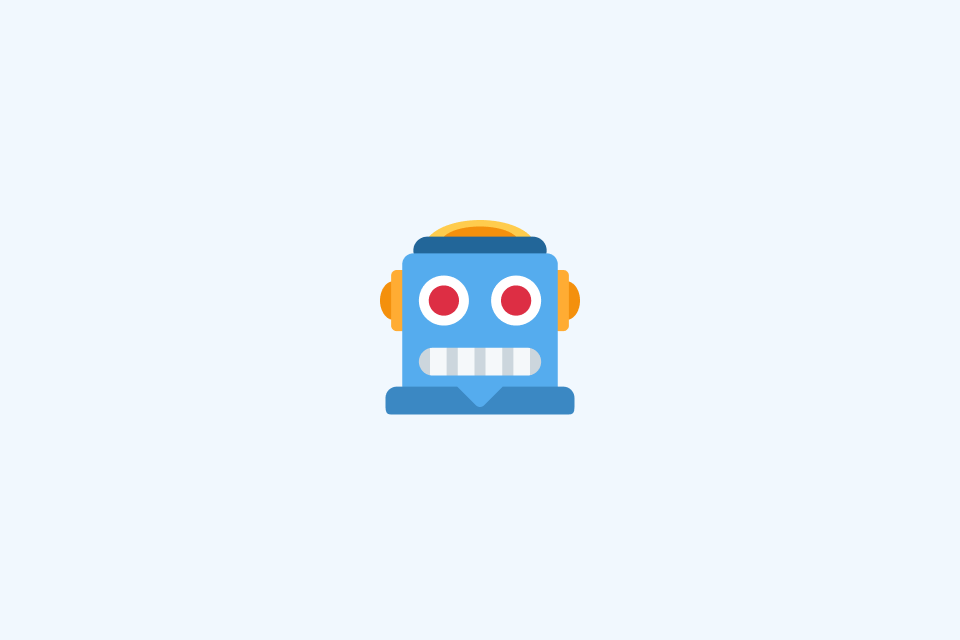Bengali: From Renaissance Letters to the Digital Frontier

TABLE OF CONTENTS
Introduction
Bengali—known to its speakers as Bangla—is one of the world’s most widely spoken languages and the national language of Bangladesh. With over 230 million native speakers (ranking 7th globally) and tens of millions more who use it daily, it’s the cultural backbone of the Ganges–Brahmaputra delta and a vital lingua franca across South Asia’s media, arts, and digital economy.
On 21 February 1952, students in Dhaka protested for their language, a moment later commemorated globally as UNESCO’s International Mother Language Day. Today, Bengali is not only the language of Tagore’s Nobel Prize-winning verse and Satyajit Ray’s cinema—it is also an increasingly digital language of code, startups, and cross-border collaboration.
Where Bengali Is Spoken
- Bangladesh: sole national and official language across government, education, and media.
- India: an official language in West Bengal and Tripura; widely spoken in Assam and urban centers nationwide.
- Diaspora: large communities in the UK (notably Sylheti speakers), USA, Middle East, Malaysia, Singapore, Italy, and beyond.
Two contemporary standards are used in media and education:
- Bangladesh Standard (Dhaka-centered Cholit-bhasha)
- Indian Standard (Kolkata-centered Cholit-bhasha)
An older, more formal Shadhu-bhasha appears in historical literature but is less common in modern speech.
What Makes Bengali Distinctive
- No grammatical gender: nouns and adjectives do not change for gender.
- Honorific system: second/third person reference and verbs align to politeness levels (tumi informal, apni formal).
- Classifiers: required with numbers and quantifiers (ṭa for things, jon for people, khana for items of food), plus plural markers like -gulo/-guli for inanimate sets and -ra for groups of people.
- Serial verbs: compact, expressive combinations like giye deoa “go and give (hand over)”, niye asha “bring (take and come)”.
A Thousand Years in Brief
- Origins: Evolving from Magadhi Prakrit via Gaudi/Old Bengali, with the earliest texts often traced to the 10th–12th century Charyapada.
- Bengal Renaissance (19th–20th c.): A flourishing in science, arts, and letters. Rabindranath Tagore won the 1913 Nobel Prize in Literature; Kazi Nazrul Islam’s poetry and songs transformed modern verse and music.
- Language and identity: The 1952 Language Movement in Dhaka shaped Bangla’s political and cultural destiny; in 1999, UNESCO established International Mother Language Day (Feb 21).
- Modern era: A vibrant cross-border literary scene, world cinema (Ray, Ghatak, Sen), streaming platforms, and a growing tech ecosystem.
Script and Sound
Bengali uses the Bengali–Assamese abugida, written left to right. Consonants carry an inherent vowel (অ, “o”) that can be suppressed with the hasanta (্). Vowels appear as independent letters at the beginning of words or as diacritics (kar) attached to consonants.
Key Script Elements
Romanization note: In this guide, ṭ/ḍ represent retroflex sounds (tongue curled back); t/d represent dental sounds (tongue at teeth).
Basic vowel attachment example:
- ক = k (with inherent অ = “ko”)
- ক + া = কা = kā (“kaa”)
- ক + ি = কি = ki
- ক + ্ = ক্ = k (inherent vowel suppressed)
Key diacritics:
- Hasanta (্) — suppresses the inherent vowel
- Anusvara (ং) — marks a homorganic nasal or word-final nasal
- Chandrabindu (ঁ) — nasalizes the vowel
- Visarga (ঃ) — marks a breathy/aspirated release in learned words
Bengali digits: ০ ১ ২ ৩ ৪ ৫ ৬ ৭ ৮ ৯
Common conjuncts (juktakkhor):
- ক্ত = kto (as in আক্তার Aktār)
- ন্ত = nto (as in অন্তর ontor “inner”)
- স্ত = sto (as in বাস্তব bāstob “real”)
Phonology Highlights
Key sound contrasts (with minimal pairs):
- Dental vs retroflex: তালা (tālā “lock”) vs টাকা (ṭākā “money”)
- Aspirated: কাল (kāl “tomorrow/black”) vs খাল (khāl “canal”)
- Although the script distinguishes short vs long vowels (e.g., ই i vs ঈ ī; উ u vs ঊ ū), in modern standard speech (Cholit‑bhasha) this length contrast is largely neutralized; realization depends mainly on the word and position/surroundings rather than orthographic length. Formal recitation may preserve longer values.
Common features:
- Stress is typically weak, with rhythmic syllable timing
- Schwa deletion and sandhi are common in rapid speech
- Several “sh” letters (শ, ষ, স) often merge in pronunciation to [ʃ] or [s]
Grammar at a Glance
Word Order and Basic Structure
- Pattern: SOV (Subject–Object–Verb)
- Postpositions: follow nouns (e.g., bārir bhitore “inside the house”)
Case Markers (clitic-like)
- Genitive: -er/-r → bāri “house” → bārir “of the house”
- Accusative/dative (specific object/person): -ke → āmāke “to me/me”, Rīna-ke “Rina (obj.)”
- Locative: -e/-te → ghor-e “in the room”
Number and Classifiers
- Human plural: -ra → chhele “boy” → chhelera “boys”
- Inanimate plural sets: -gulo/-guli → boi-gulo “the books”
- Common classifiers: -ṭa (things), -jon (people), -khana (flat/food items)
Pronouns and Honorifics (no gender)
- I: āmi
- You informal: tumi
- You formal: apni
- He/She (proximate): she
- Honorific he/she: tini
- They: tārā
Verbs
Inflect for tense/aspect and honorific level; habitual, progressive, and perfective forms are core.
Negation
Typically with na after the verb phrase: āmi jāni na “I don’t know”
Serial Verbs
Combine light verbs (deoa “give”, neoa “take”, phela “throw”) to nuance aspect/result.
Example Dialogue
A: আপনি কেমন আছেন?
Apni kemon āchen?
”How are you?” (formal)
B: আমি ভালো আছি। আপনি?
Āmi bhalo āchhi. Apni?
”I’m well. And you?”
A: আমিও ভালো। আপনি কোথায় থাকেন?
Āmio bhalo. Apni kothāy thāken?
”I’m also well. Where do you live?”
B: আমি ঢাকায় থাকি।
Āmi Ḍhākāy thāki.
”I live in Dhaka.”
Dialects and Registers
- Standards: Bangladesh Standard (Dhaka), Indian Standard (Kolkata). Mutually intelligible, with pronunciation and lexical preferences that differ subtly.
- Notable varieties: Sylheti (UK diaspora), Chittagonian (SE Bangladesh) show significant phonological and lexical divergence with ~60-70% mutual intelligibility with Standard Bengali; some linguists classify them as closely related but distinct languages.
- Registers: The older Shadhu-bhasha appears in historical and ceremonial writing; modern Cholit-bhasha dominates education, journalism, and daily conversation. Shadhu‑bhasha differs from Cholit‑bhasha not only in vocabulary but also in verb inflection and pronoun paradigms, and it functions as a written register rather than a spoken one—beginners can safely focus on Cholit‑bhasha.
Literature, Media, Culture
- Canonical figures: Rabindranath Tagore (poetry, songs), Kazi Nazrul Islam (poet, composer), Sarat Chandra Chattopadhyay (novels), Jibanananda Das (modern poetry).
- Cinema: Satyajit Ray, Ritwik Ghatak, Mrinal Sen laid global foundations; regional industries continue to thrive.
- Music: Rabindra Sangeet (Tagore songs), Nazrul Geeti, folk Baul traditions, plus contemporary pop and indie scenes.
- Media: Cross-border TV, films, OTT (e.g., Hoichoi), and prolific YouTube podcast/news ecosystems support immersive learning.
Bengali in the Digital Age
- Unicode-ready: modern OSes handle Bengali script; be mindful of conjuncts and zero-width joiners in typography.
- Fonts: Noto Sans Bengali, AdorshoLipi, SolaimanLipi, Hind Siliguri.
- Input: Avro Keyboard (phonetic), Bijoy layout (typewriter-style), Gboard Bangla (mobile).
- NLP: Word segmentation and conjunct handling complicate tokenization; Universal Dependencies Bengali resources exist; Wikipedia and news corpora support training.
- Translation and localization:
- Use AI translators that respect honorifics and register.
- OpenL Bengali Translator helps with high-quality, register-aware drafts and back-translation to spot meaning drift: https://openl.io/translate/bengali
A Learning Roadmap (6–8 Weeks)
Week 1: Script and Sound
- Learn the letter inventory, kar (vowel signs), and 20 most common conjuncts
- Practice digits ০–৯ and handwriting drills
- Resources: Omniglot Bengali alphabet chart, Anki deck “Bengali Script Mastery”
Weeks 2–3: Core Grammar Blocks
- Pronouns + honorific system; everyday verbs (go, come, do, know, want)
- SOV patterns with -ke/-e/-er markers; basic negation with na
- Resources: “Teach Yourself Complete Bengali” Units 1-4, italki conversation partners
Week 3: Classifiers and Counting
- -ṭa, -jon, -khana with numbers 1–20
- Time/date phrases; prices and quantities
- Practice: Count objects around your house in Bengali, practice shopping dialogues
Week 4: Serial Verbs and Aspect
- niye asha (bring), giye deoa (hand over), feli deoa (throw away/resultative)
- Progressive vs perfective contrasts in everyday contexts
- Resources: Watch cooking videos on YouTube in Bengali to hear serial verbs in action
Weeks 5–6: Input + Listening Loop
- Choose Avro or Gboard; write daily mini-posts (50-100 words)
- Listen 10–15 minutes/day to Bangla news/podcasts; shadow short clips
- Resources: BBC Bangla news, “Ei Somoy” talk show clips, Spotify Bengali playlists
Week 7+: Conversation and Feedback
- Language exchanges via HelloTalk, Tandem, or italki
- Record short voice notes; ask native speakers for feedback
- Use AI back-translation to catch errors; replace “correct but bookish” outputs with natural collocations from trusted sources
Common Learner Pitfalls
- Dropping classifiers: Always use -ṭa, -jon, etc. with numbers (not “tin boi” but “tin-ṭa boi”)
- Honorific confusion: Mixing tumi and apni in the same conversation—stay consistent
- Overusing English loanwords: Many exist, but use Bengali equivalents when possible for fluency
- Ignoring serial verbs: They’re essential for natural speech; practice them actively
- Hasanta placement errors: Remember ক্ + ত = ক্ত, not ক + ্ত
Core Phrases
- নমস্কার / সালাম — Nomoshkar / Salam — Hello (neutral / Islamic greeting)
- আপনি কেমন আছেন? — Apni kemon āchen? — How are you? (formal)
- তুমি কেমন আছো? — Tumi kemon ācho? — How are you? (informal)
- আমার নাম … — Āmar nām … — My name is …
- আমি বাংলাদেশ/ভারত থেকে এসেছি — Āmi Bangladesh/Bhārat theke eshechi — I’m from Bangladesh/India
- ধন্যবাদ — Dhonnobād — Thank you
- অনুগ্রহ করে / দয়া করে — Onugroho kore / Doyā kore — Please
- হ্যাঁ / না — Hyã / Nā — Yes / No
- আমি একটু বাংলা বলি — Āmi ektu bangla boli — I speak a little Bengali
- দাম কত? — Dām koto? — How much is it?
- বাথরুম কোথায়? — Bāthrum kothāy? — Where is the bathroom?
- আমি বুঝতে পারছি না — Āmi bujhte pārchhi na — I don’t understand
- সাহায্য করবেন? — Sāhjyo korben? — Could you help me?
- এটা খুব ভাল — Eṭa khub bhalo — This is very good
- পরে দেখা হবে — Pore dekhā hobe — See you later
Tools and Resources
Translation and Writing Aid
- OpenL Bengali Translator: high-quality drafts, register-aware checks, and back-translation workflows — https://openl.io/translate/bengali
Input and Fonts
- Avro Keyboard (Windows/macOS/Linux), Bijoy (Windows), Gboard Bangla (iOS/Android)
- Fonts: Noto Sans Bengali, AdorshoLipi, SolaimanLipi, Hind Siliguri
Dictionaries and Corpora
- Wiktionary (Bengali), Glosbe EN–BN, Bangla Academy print dictionaries
- Universal Dependencies (Bengali) for learners dabbling in NLP
Media for Immersion
- News: BBC Bangla, DW Bangla, Prothom Alo
- Streaming/music: Hoichoi, Spotify Bengali playlists, YouTube interviews and talk shows
- Podcasts: “Anirban’s Podcast”, “Dhaka Diaries”
Study Aids
- Anki decks: “Bengali Script Mastery”, “1000 Most Common Bengali Words”
- Graded readers: “Bengali Short Stories for Beginners”
- Parallel texts: Tagore poems with English translations
Conclusion
Bengali is a living bridge between a millennium of letters and today’s digital frontier. It gives you access to Nobel-winning poetry, landmark cinema, and one of the world’s most active diasporas—while offering a pragmatic pathway to real-world communication across South Asia. Learn the script, embrace honorifics and classifiers, build small sentence patterns, and use AI judiciously to iterate toward natural fluency. With steady practice, Bangla opens both a rich past and a very modern future.
Sources and further reading
- Encyclopaedia Britannica: Bengali language; Wikipedia: Bengali language; Charyapada
- Rabindranath Tagore: poems and songs (public translations); Kazi Nazrul Islam
- Universal Dependencies: Bengali treebanks; Bengali Wikipedia and news corpora
- Bangladesh/India official language policies; UNESCO: International Mother Language Day


